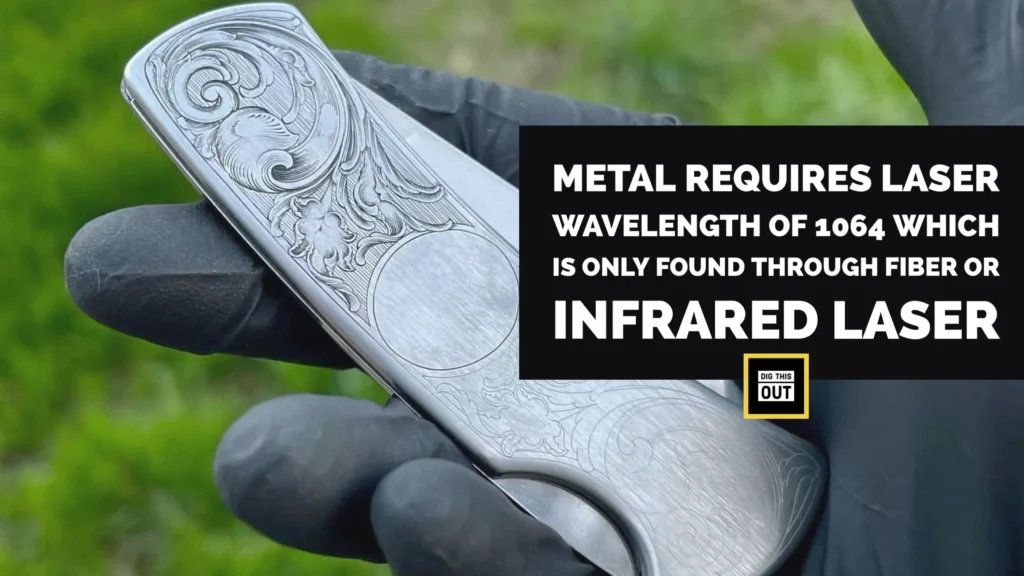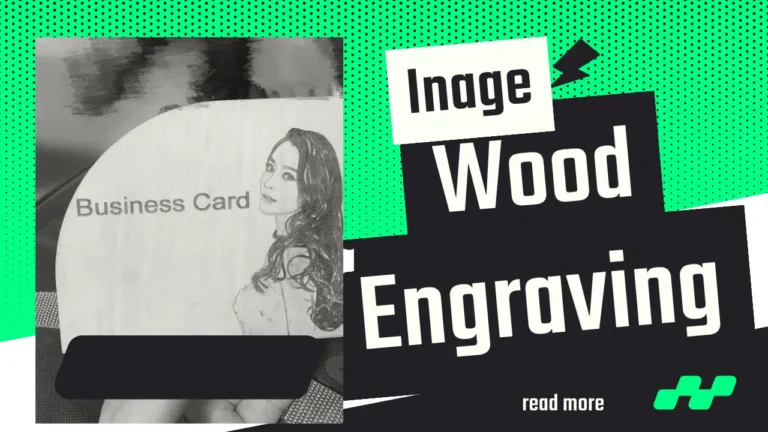Join Workshops
Physical Address
304 North Cardinal St.
Dorchester Center, MA 02124
Can a CO2 Laser Engrave Stainless Steel?
In a nutshell, CO2 lasers can only engrave anodized and coated steel. Due to the reflective nature of the bare stainless steel, the CO2 laser beam cannot perform metal marking on the shiny surface of the stainless steel. Using a fiber laser can help in shiny metal marking.
Understanding the capabilities and limitations of CO2 lasers concerning stainless steel is crucial for achieving the desired results.
Key Takeaways
- CO2 lasers can engrave anodized and powder-coated stainless steel.
- Shiny stainless steel cannot be engraved with a CO2 laser due to its reflective nature.
- Other laser types, such as fiber lasers, infrared lasers, and MOPA fiber lasers, are more suitable for engraving bare stainless steel.
- Selecting the appropriate laser technology ensures optimal engraving results.
- Best practices include optimizing laser settings and post-engraving treatments.
How Do CO2 Lasers Work?
CO2 lasers utilize a gas mixture, predominantly carbon dioxide, to generate a high-energy laser beam, which can cut, mark, or engrave materials by vaporizing the surface layer. The depth of the cut determines whether it is a metal marking or engraving. Alternatively, by changing the surface color through oxidization can also help to visualize letters or patterns – which we call annealing,
CO2 lasers are particularly effective on organic materials like wood, leather, and acrylics, as well as certain coated metals, and are not appropriate for shiny metal workpieces. The versatility and affordability of CO2 lasers make them a popular choice in many industries.
Can a CO2 Laser Engrave Anodized and Powder-Coated Stainless Steel?
Yes, a CO2 laser can effectively engrave anodized and powder-coated stainless steel. These coatings provide a surface that the laser can interact with, avoiding issues related to reflectivity.
For example, engraving anodized stainless steel results in clear, permanent marks because the laser beam removes the anodized layer, revealing the underlying metal. Technically, the co2 laser only melts the anodized layer, not the bare portion of the stainless steel.
Consider a scenario where you need to engrave serial numbers on stainless steel water bottles.
Using a CO2 laser on anodized stainless steel bottles will yield precise and durable engravings, perfect for inventory tracking and customization. However, the CO2 laser can also handle stainless steel coated with the metal marking spray that can be removed after the engravings are done.
Whatever the situation, the power of the CO2 laser beam, cannot cut the steel due to the inherent nature.

Why Can’t a CO2 Laser Engrave Shiny Stainless Steel?
A CO2 laser cannot engrave shiny stainless steel because the reflective nature of the metal disperses the laser beam.
This reflectivity reduces the laser’s effectiveness and poses a risk of damage to the laser equipment. Consequently, CO2 lasers are not suitable for direct engraving on bare, shiny stainless steel.
According to industry data and previous trials, reflective materials like shiny stainless steel can reflect up to 98% of the laser energy, significantly diminishing the engraving quality and efficiency. This highlights the necessity of using appropriate laser types for different materials.
What Are the Alternatives for Engraving Shiny Stainless Steel?
To engrave shiny stainless steel, using a fiber laser, infrared laser, or MOPA fiber laser is a more suitable choice. These lasers operate at different wavelengths, allowing them to penetrate the reflective surface of stainless steel and produce precise and permanent engravings.
Fiber lasers are ideal for engraving shiny stainless steel because they operate at a wavelength of approximately 1064 nanometers (nm). This wavelength is absorbed well by metals, including stainless steel, allowing for effective and precise engraving.
Fiber lasers are also known for their high power density and efficiency, making them suitable for industrial applications.
Furthermore, fiber lasers excel in applications requiring high precision, such as engraving barcodes, serial numbers, or intricate designs on stainless steel medical instruments or automotive parts. The robustness and accuracy of fiber lasers ensure high-quality engravings even on reflective surfaces.
Alternatively, infrared lasers, such as those found in the xTool F1 and LaserPecker 4, also provide a viable alternative for engraving shiny stainless steel. Infrared lasers typically operate at a wavelength of 1064 nm, similar to fiber lasers, but they can vary slightly depending on the specific technology used.
Infrared lasers are versatile and can be used for various materials, including metals, plastics, and more.
Moreover, the MOPA (Master Oscillator Power Amplifier) fiber lasers offer an advanced solution for color laser engraving on stainless steel. These lasers operate at similar wavelengths to traditional fiber lasers but have additional capabilities due to adjustable pulse durations.
This flexibility allows MOPA lasers to create different colors on stainless steel by altering the laser’s interaction with the material.
The key advantage of MOPA lasers is the ability to control pulse duration, ranging from nanoseconds to picoseconds. This control enables precise manipulation of the material’s surface, resulting in varied oxidation states and, consequently, different colors.
Best Practices for Laser Engraving Stainless Steel
The following are the best practices that help engraving stainless steel trouble-free.
Optimizing LightBurn Settings
LightBurn is a popular software used to control laser engravers. To achieve the best results when engraving anodized or powder-coated stainless steel with a CO2 laser, it’s essential to optimize the settings:
- Focus: Ensure the laser is properly focused on the surface. A well-focused laser beam results in sharper and more precise engravings.
- Power: Set the power level to around 30-40 watts for engraving anodized stainless steel. This range is sufficient to remove the anodized layer without damaging the underlying metal.
- Speed: Use a moderate speed setting to balance between engraving depth and precision. A speed of 200-300 mm/s is generally effective.
- Frequency: Adjust the frequency to achieve clean edges. A frequency of 20-30 kHz is recommended for detailed engravings.
For engraving anodized stainless steel plaques, a power setting of 35 watts, speed of 250 mm/s, and frequency of 25 kHz can produce excellent results. Adjust these parameters based on the specific material and thickness.
Post-Engraving Tips
To enhance the quality and durability of your engravings, consider these post-engraving practices:
- Metal Marking Spray: Applying a metal marking spray, such as CerMark or LaserBond, can improve the contrast and visibility of the engraving. The spray creates a black mark on the stainless steel, making the engraved design stand out.
- Cleaning: After engraving, clean the surface to remove any residue or debris. Using a soft cloth and mild cleaning solution will help maintain the quality of the engraving.
- Protective Coating: For outdoor or harsh environment applications, applying a clear protective coating can prevent corrosion and wear, ensuring the engraving remains intact over time.
Understanding Laser Parameters and Settings
Optimizing laser parameters, such as power, speed, and frequency, is crucial for achieving the desired engraving quality. For instance, when engraving anodized stainless steel with a CO2 laser, adjusting the power and speed settings ensures a clean and crisp engraving without damaging the coating.
For example, when setting up your CO2 laser for engraving anodized stainless steel plaques, a power setting of around 30-40 watts with a moderate speed will produce clear and precise engravings. Adjusting these parameters based on the specific material and coating thickness is essential for optimal results.
Conclusion
In summary, while a CO2 laser can effectively engrave anodized and powder-coated stainless steel, it cannot engrave shiny stainless steel due to its reflective properties. For direct engraving on bare stainless steel, fiber lasers, infrared lasers, and MOPA fiber lasers are the optimal choices. Understanding the specific capabilities and limitations of different laser types is essential for selecting the right tool for your engraving needs.



